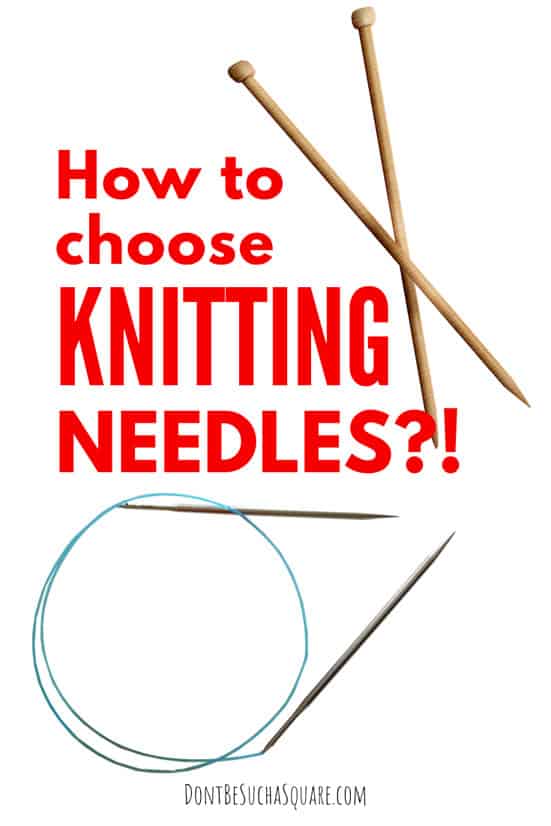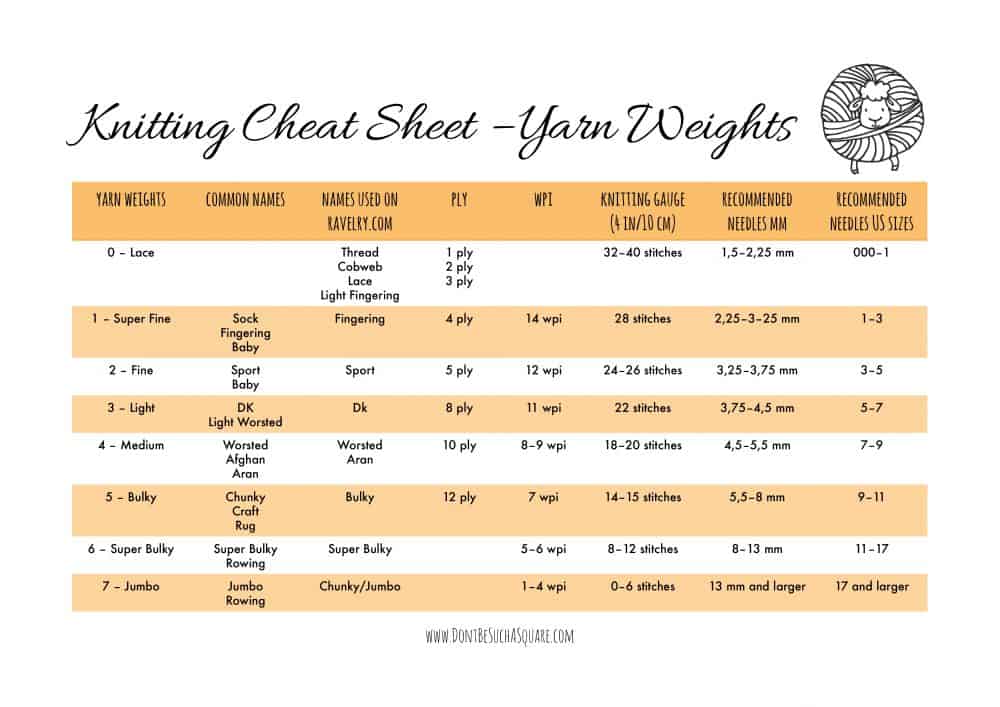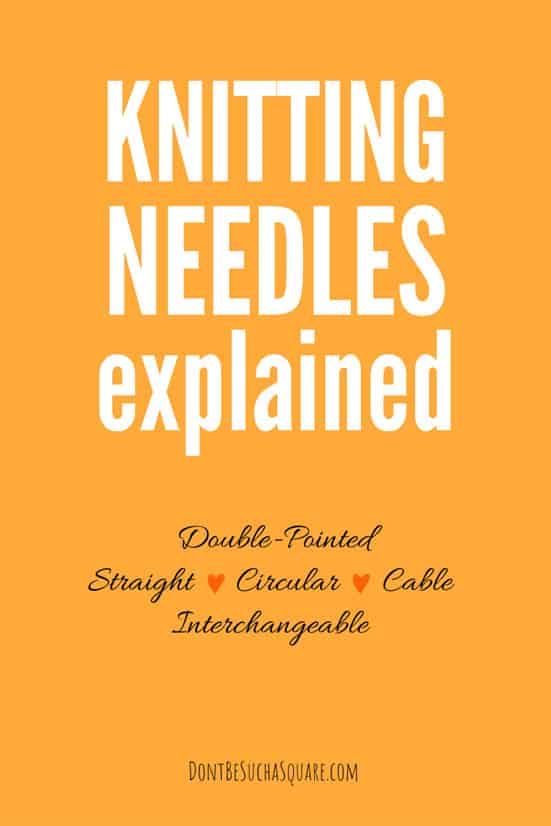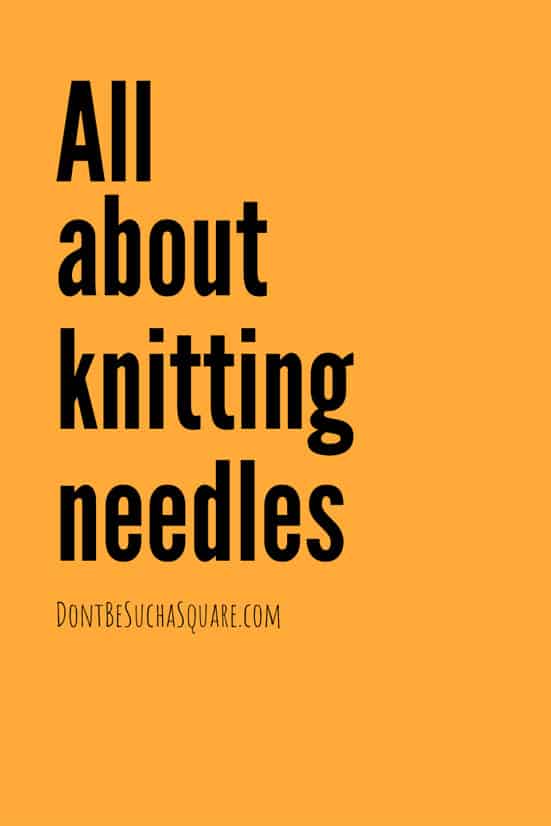The best knitting needles for beginners
As an Amazon Associate and member of LoveCrafts affiliate program, I earn commissions from qualifying purchases at no additional cost to you.

So, you have decided on taking up knitting? Good for you! Knitting has so many benefits, even for your health! But to start knitting you need to gather some supplies and get your first knitting needles!
If you have knitting needles on hand, start out with them. No need to spend money on a new hobby before you know if it’s your thing, right?
Need to buy your first knitting needles? No worries, there is a lot of materials and different kind of needles available, but no worries! I will guide you through everything you need to know!
Actually, the most important thing is that your yarn and needles match, all the other stuff is just preferences and you will learn what you like in time.
Beginners knitting needles – what needles are there?

Straight knitting needles
I think most people picture straight needles when they think of knitting. These needles come in sets of two. Each has a pointy tip and a stopper at the other end.
This type of knitting needles is the most common and are often used as first needles, as they are easy to use.
The lengths of straight needles range from 9 to 14 inches / approx 23 to 35 cm long, but it’s possible to find shorter and longer needles too.
When knitting on straight needles you will find that they can’t hold as many stitches as a circular needle. This makes them more suitable for small projects. When learning to knit small projects that you knit flat, like washcloths and scarves, are perfect.

Double pointed needles – DPN’s
Another type of knitting needles is double-pointed needles these are smaller straight needles that come in sets of five. These don’t have a stopper, but are pointy at both ends, as the name calls.
These needles are between 5 to 8 inches / 13 to 20 cm long and they are made in the same materials as other needles.
Double-pointed knitting needles are used to knit smaller projects in the round. For example, they are commonly used for knitting socks, mittens, and arms for sweaters.
Knitting with DPN’s requires more training than knitting on straight or circular needles as there are more of them to keep track of. But it’s quite fun once you get the hang of it. It may be a good choice to stay away from slippery metal needles when practicing this skill!
Circular knitting needles
A circular needle is made of two tips, short needles, connected with a cable or cord. The circular needle is the most versatile. You can use it to knit in the round as well as flat (back and forth).
And if you have a long cable you can have loads of stitches and knit large projects. You can also use the magic loop technique and knit a small project like a sock with a long cable.
The circular needle lets your project rest on your lap rather than hang at the ends of your needles and therefore put less strain on your hands, neck, and shoulders.
If you aren’t sure about the length, go for a longer one. You can always pull the cable out in a loop between two stitches if it’s too long.
The tips can be made of the same materials as other needles.
The cable can be made of different materials, the most common ones are nylon or plastic-covered metal wire.
Some cables hold their shape, they have a memory, these can be awkward to knit on because they don’t always move like you want them to. To avoid this look for “memory-less” wires.
Reading tips:
––> Circular knitting needles for beginners
––> What do do if your circular needle is too long
––> How to soften a stiff cable
Interchangeable knitting needles
These are the kings and queens of knitting needles in my opinion! I almost never use anything other than my set of interchangeable knitting needles, simply because I don’t need to.
Interchangeable knitting needles offer the flexibility of circular needles in a lot of sizes and can be used both as straight and circular needles.
Like the circular needle, they have two needle tips and a cord, only that the pieces separate and can be put together as you wish.
You have tips in different sizes and cables in different lengths. These pieces are then used to assemble the needle you need for the moment. If you attach tips to cables and add stoppers on one end you can use them as straight needles.
Many brands connect the parts with a small screw, but there are other solutions too. Parts form different brands can not be used together.
These needles are bought in sets or individually.
Reading tip:
––> You can read more about interchangeable knitting needles in this post!
How to pick the right size of needles
When you’re learning to knit it’s easier to use large needles, choose sizes from US11/8mm and up for your first pair.
But the most important thing when it comes to size is that the needles fit the yarn. The suggested needle size is almost always stated on the yarn label.
I have a yarn weights chart that you can print and have on hand, or pin to Pinterest for easy access, and use when matching yarn and needles.
In this chart, you can see which needles and yarn weights that go together. It also shows how to convert yarn weights between different standards.

The chart shows that if you use needles US11/8mm or larger you should look for yarn that’s bulky, super bulky or jumbo. Or the corresponding terms if you’re not shopping in the US.
Reading tip:
––> How to match Yarn and Needles
Why are large needles good for beginners?
Big needles have some benefits for beginners. To start with they are easier to handle and many new knitters feel more secure with the larger needles.
Another benefit of knitting with big needles is that your knitting project will grow faster. When you use a heavier yarn and larger needles the stitches you knit are larger and add up faster. That’s nice!
But, if you already have needles on hand, use them even if they’re smaller. You can learn on these too and hey, they’re free! Use the yarn weights chart to determine which yarn weight pairs up best with your needles.
How to choose materials for beginners knitting needles
Knitting needles are available in a range of materials. The most common ones are wood, bamboo, plastic, and metal.
Wood and bamboo are light and have a little grip which can be great for slippery yarns or beginner knitters.
Metal needles are more durable and the slick surface lets the yarn slide easier. This is great for clingy yarns and knitters who knit tight. The smooth surface also makes the metal needles faster to knit with and makes the knitted fabric smoother.
Plastic needles are the cheapest and the lightest. They are smoother than wooden and bamboo needles but not as metal. This makes them great for beginners, but maybe you’ll want to change them out after a while as they also bend easily and occasionally breaks.
How pointy should your knitting needles be?
Knitting needles can be sharp and pointy, or more rounded.
Which you choose depends on personal preferences as well as what you’re going to knit.
A sharp needle helps you be more accurate and is perfect for lightweight (thin) yarns and more advanced stitching patterns like lace or cables.
But sharp tips and bulky yarns usually don’t go well as it’s easy to split the yarn with a pointy tip. As a beginner, I would say to go for a blunter tip and a bulky yarn to make it easier on yourself.
The rounder tips are also a good choice for kids, as the risk of hurting yourself or others are smaller.
How I decided on my favorite needles
It’s really not that important which kind of material or style you choose for beginner knitting needles. As a new knitter you will be buying new needles for almost every project, so if you like to you could try out a new kind every time until you have found your favorites!
Personally I love steel needles from HiyaHiya and have bought a set with interchangeable tips and cables in the smaller sizes with sharp tips. You can read more about what makes these needles so good here and find them on Amazon here!
Trying my first knitting needles
I choose to buy this set when I had learned what my preferences are. It took a year or so of trial and error before I had it figured out.
During that year I first knitted on my mother’s straight aluminum and plastic needles from the ’80s and I was fine with that. I tried double-pointed needles of bamboo but they slowed me down.
The cheap circular needles with stiff plastic cables I tried almost drove me nuts! Then I tried a circular needle with soft cables and pointy tips and everything fell in place 🙂
Then I knew what I wanted from a knitting needle:
- I like metal needles because I want my stitches to fly off the tips as fast as possible.
- Only circular needles get to go in my knitting bag because the straight ones make my body hurt.
- The cables have to be able to swivel in the connections and the connections have to be smooth and not snag my yarn.
- Soft cables that aren’t twisting or turning is a must.
You might have other preferences! Start knitting and figure out what they are!
Let’s move on to other supplies!
Now we have gone through the different types of knitting needles, the most common materials they are made of and how to pick a good size to start out with.
Next on the list is to…
––> Pick a yarn for your project
––> How to match yarn and needles
––> Best supplies for beginner knitters


